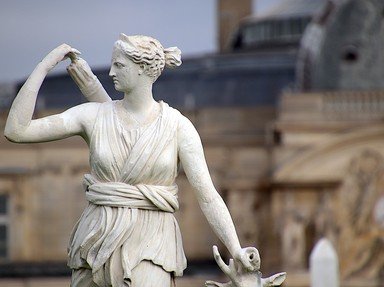Quiz Answer Key and Fun Facts
1. If Rodin was the last great representational sculptor, Constantin Brancusi was the first great abstract one. So new was Brancusi's work in stone and metal that US Customs refused to allow one of the following works to be classified as "art". Which?
2. This man's abstract sculptures are often pierced, reclining, or both. You can visit many of them at the Art Gallery of Ontario.
3. Alexander Calder is credited with inventing two now-familiar modern art forms. One is the mobile; which is the other?
4. Which of the following is a 20th-century sculptor who pioneered the use of "found objects" such as wood scraps, nails and glass in her large, collage-type sculptures?
5. This master's sculptural figures often have elongated limbs and faces so thin as to be almost two-dimensional.
6. At New York's Storm King Art Center, you can visit Isamu Noguchi's monumental granite "Momo Taro". Which of the following statements about Noguchi's masterpiece is correct?
7. Some artworks are so immediately appealing that they enter popular culture and remain icons for decades. Although not primarily a sculptor, Robert Indiana produced one such work. What is the one-word title of Indiana's much-reproduced Pop Art sculpture?
8. Dozens of sculptures by Claes Oldenburg and Coosje van Bruggen feature monumental-size representations of ordinary objects.
9. What non-traditional medium is Turner Prize-winning artist Chris Ofili notorious for including in his artwork?
10. Slovenian artist Marjetica Potrc won the coveted Hugo Boss prize in 2000. Her work synthesizes art (including sculpture) and architecture, and often focuses on the developing world. One of Ms. Potrc's most famous works is the "Hippo Roller". For what is the Hippo Roller used?
Source: Author
LilahDeDah
This quiz was reviewed by FunTrivia editor
bloomsby before going online.
Any errors found in FunTrivia content are routinely corrected through our feedback system.
